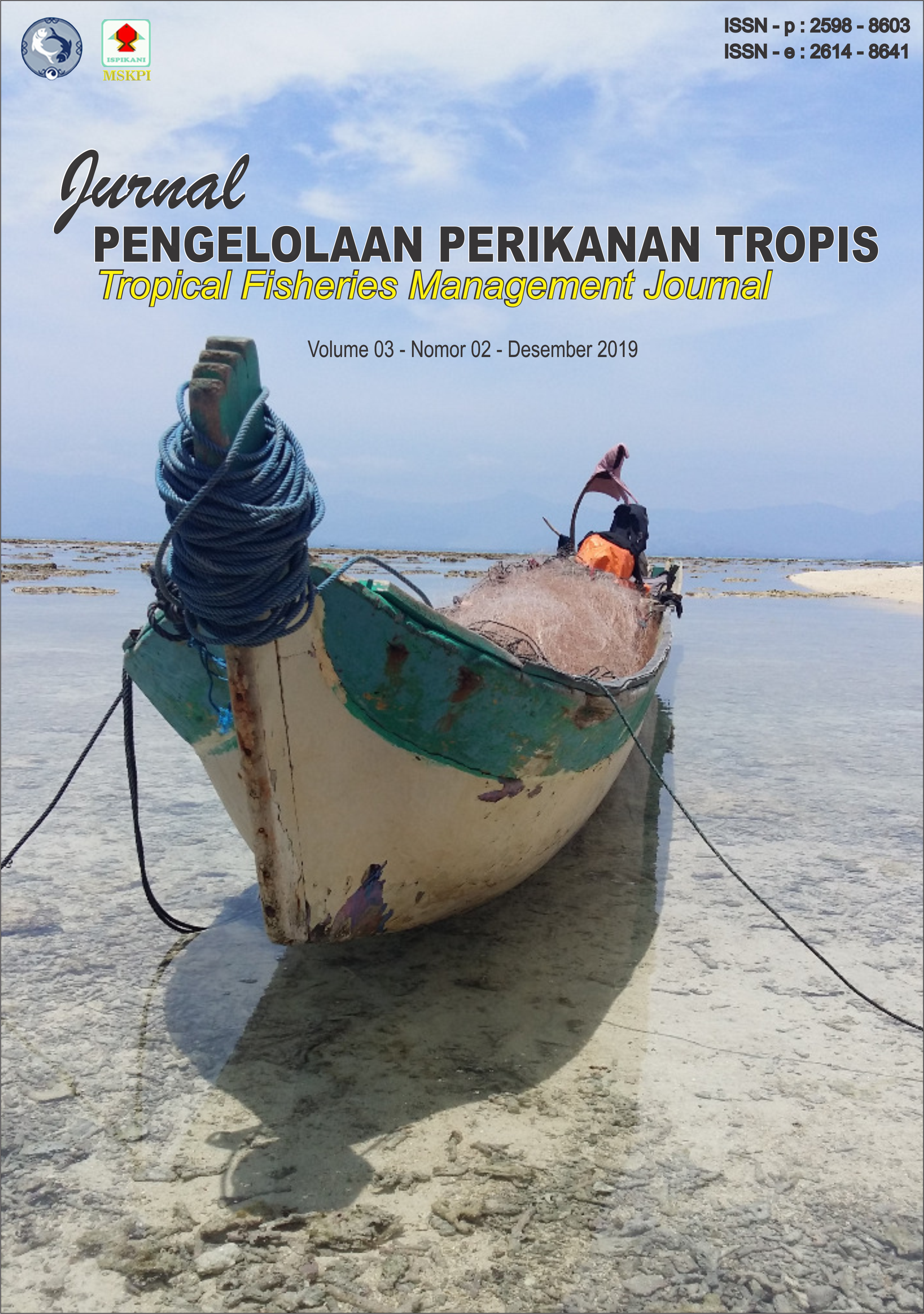Fishermen Income and Welfare from the Profit Sharing System in the Sunda Strait
Tingkat Kesejahteraan Nelayan dari Sistem Bagi Hasil di Selat Sunda
Abstract
The welfare level of fisher can be determined from the catches obtained from fishery activities. High and low catches one of which is affected by different fishing seasons. This study aims to identify catch production based on the season, and determine the welfare level of small-scale and large-scale fisher from the catches of fisher who are around the waters of the Sunda Strait. The research was conducted in May 2019 at PPP Labuan, Banten and PPP Lempasing, Bandar Lampung. Data collection was carried out by stratified random sampling method based on strata according to small scale fisher (below 10 GT) and large scale fisher (above 10 GT) consist of captains, boat interpreters, and boat crew as much 30 fishers. The production of fish catches in the Sunda Strait varies from season to season. The peak season occurs between July to October, and the famine season occurs in November to February, and the rest is moderate or transitional. The welfare level of fisher in the Sunda Strait is at a high level of welfare (56.67 percent) and moderate (43.33 percent). Fisher with high welfare level is mostly found in large-scale boat fisher (above 10 GT) and who serve as captain and interpreter.
Downloads
After the article is submitted and published in this journal, it is fully copyrighted by the Journal of Tropical Fisheries Management. If excerpts from other copyrighted works are included, authors must obtain written permission from the copyright owner and give credit to the source in the article. Then, authors or reader is allowed to copy, share, and redistribute articles/material in any form. But it must still include the appropriate source and credit because the article in this journal is licensed by Creative Commons Attribution 4.0 International License (CC BY 4.0).




1.png)








